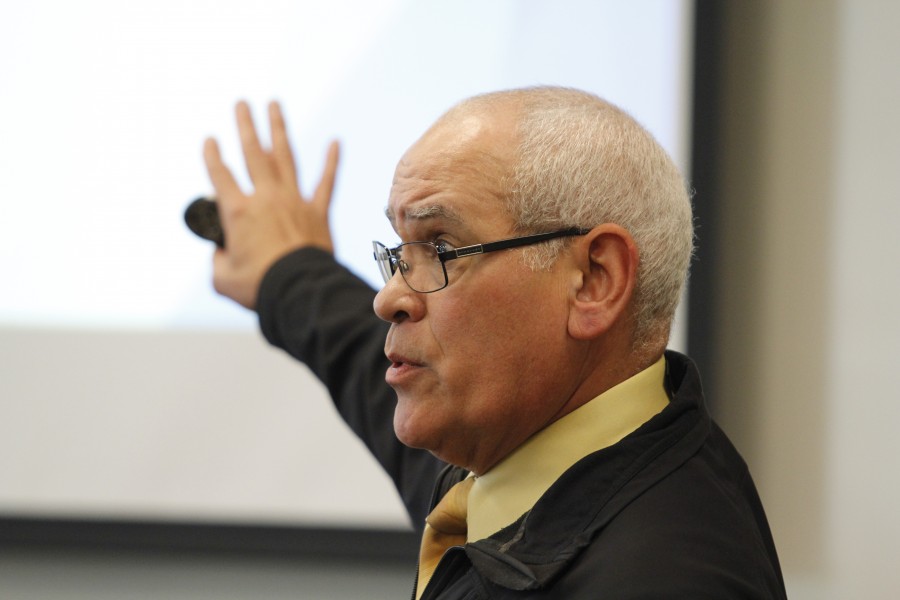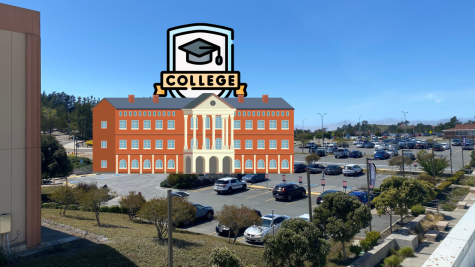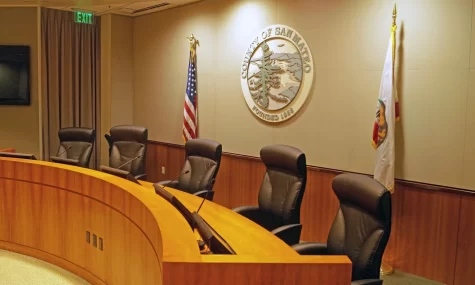District calls building 1 a “disaster,” plans demolition
Skyline will demolish Building 1, break ground on a new environmental studies center, and undertake various other capital improvement projects in the first wave of a $100 million campus reformation.
On Feb. 27, campus personnel heard presentations by SMCCCD facilities officials Karen Powell and Jose D. Nuñez on the future of Skyline’s campus architecture. Powell is executive director of facilities, maintenance and operations, and Nuñez serves the district’s three college campuses, Skyline, Cañada and College of San Mateo, as vice chancellor of facilities planning, maintenance and operations. Together, they addressed Skyline faculty and administrators on the pressing need for renovations, as well as the costs that the planned projects will require. Nuñez called upon members of the audience, which included President Dr. Regina Stanback Stroud, Vice President of Instruction Sarah Perkins, numerous professors, and members of the grounds crew, but no students, to “use your imagination” as the proposed plans take shape.
“It’s time to take it from the conceptual arena – i.e. so many square feet, times estimated construction value, gives you a number – into reality,” Nuñez said.
“I don’t think we have anything that’s going to go beyond 24 months,” Powell said.
Although even the major projects remain in their planning stages, the district currently intends to destroy Building 1, a 46-year-old, cast-in-place concrete structure that has never required significant repairs.
“For this particular building, because of the way it’s configured, it’s a disaster,” Nuñez said.
Powell seconded this assessment, saying that she could not foresee updating the structure to current environmental standards. She predicted that the new Building 1 will increase square footage from 77,000 to between 100-120,000 square feet.
“We need to take advantage of all of the real estate that we have on campus to serve the instructional needs that we have,” Powell said.
During the presentation, Powell suggested that some of the old technology, furniture and upholstery from Building 1 might be auctioned off on eBay once the objects have been removed. Lead Groundskeeper, Zachary Traywick, wondered if the budget for the new building includes all the new infrastructure that will have to replace Building 1’s dated contents. He added that the upcoming work will stretch his crew to their “utmost capabilities.”
The Building 1 project is hardly the only massive undertaking on Skyline’s horizon. The district also plans to add a new environmental studies building and a new energy management building. When these projects are underway, renovation and improvements will begin on Building 2, Building 5, and the Early Childhood Learning Center.
Nuñez announced that classes currently operating out of Building 1 will be moved to Pacific Heights, “and any other spaces that we can find,” while Building 1 is prepped for demolition. Eventually, Pacific Heights will also be destroyed. Some professors who currently work out of Building 1 addressed their concerns about the impact the construction and relocation might have on their teaching.
“We have so many programs in so many specialized spaces,” music instructor Zach Bruno said.
He drew attention to the thin resources in Pacific Heights, siding with teachers and students who find the space less than ideal.
“Pac Heights was never supposed to be part of the permanent schedule,” Nuñez said, referring to Pacific Heights by its nickname. “I’ve allowed Pac Heights to be used for scheduling purposes, but that building is mine for swing space. I’m not going to spend a lot of money there, because I’m going to destroy it, but I’m going to try to accommodate, as best as possible, the ceramics people, the painting people, and the sculpture people.”
The upcoming work is being underwritten by a San Mateo County bond measure, known as Measure H, that passed last November. Measure H awarded a total of $388 million in property tax revenue to the district’s campuses for facilities, renovations and construction. Skyline’s portion of the revenue from Measure H is currently $100 million, but the construction projects envisioned by Powell and Nuñez will cost considerably more. The district is budgeting the three campuses’ planned construction projects at $473 million, the majority of which will come directly from the Measure H bonds, with the rest being gathered from interest on the bonds and other money already in the district’s coffers.
Measure H, which passed with 66 percent of the vote, stipulates that the $388 million in bond revenue may be used solely for architectural purposes. It cannot go toward teacher pay, or any other budgetary needs on the district’s horizon. Nuñez pointed out after finishing his presentation that the state of California has not funded an educational state bond measure since 2006.
“Governor Brown thinks (the state) should not be funding education,” Nuñez said. “And I disagree.”
Skyline will host a follow-up discussion on the Measure H projects on March 25.
Update: an audio slideshow was added to the article at the bottom, the slideshow uses audio and photos recorded and taken during the meeting. 1:02 p.m. 3/7/2015
Update: the article headline has been updated to fix AP errors in the headline and in the photo cutline. 12:33 3/9/2015




















